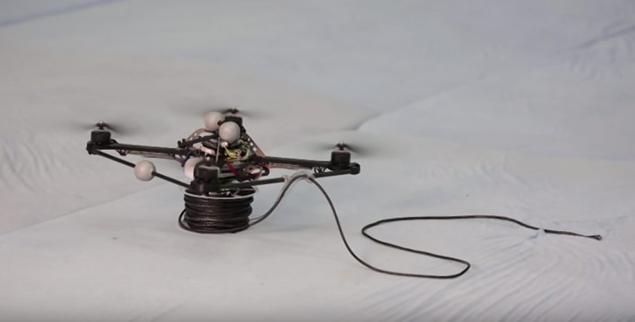-
Tips for becoming a good boxer - November 6, 2020
-
7 expert tips for making your hens night a memorable one - November 6, 2020
-
5 reasons to host your Christmas party on a cruise boat - November 6, 2020
-
What to do when you’re charged with a crime - November 6, 2020
-
Should you get one or multiple dogs? Here’s all you need to know - November 3, 2020
-
A Guide: How to Build Your Very Own Magic Mirror - February 14, 2019
-
Our Top Inspirational Baseball Stars - November 24, 2018
-
Five Tech Tools That Will Help You Turn Your Blog into a Business - November 24, 2018
-
How to Indulge on Vacation without Expanding Your Waist - November 9, 2018
-
5 Strategies for Businesses to Appeal to Today’s Increasingly Mobile-Crazed Customers - November 9, 2018
Watch as a trio of flying drones build a working rope bridge
These magnanimous drones, themselves having no need for a footbridge, build a suspension bridge for their human underlings in the Flying Machine Arena laboratory of ETH Zurich.
Advertisement
As we learned earlier this year, researchers at ETH Zürich’s institute for Dynamic Systems and Control are looking at ways in which flying construction robots can be programmed to autonomously build tensile structures.
They hope the technology could eventually be used to save lives. The big problem is lifting capacity, but breaking things down into smaller components would make this easier. Dyneema is made from ultra-high molecular weight polyethylene and we’ve seen it used in everything from bulletproof blankets and whiteboards. The quadrotors did have some other special features to help them with the task, such as a plastic tube to help with the rope and prevent it from being tangled in the rotors and spools to keep tension on the rope.
The bridge that the quadrotors wove spans a 7.4-meter gap using a total rope length of about 120 meters, and uses a variety of techniques that outdoorsy types are probably familiar with, including knots, links, and braiding. The arena is equipped with a motion capture system that provides vehicle position and attitude measurements. That data is processed through a computer that then sends commands out to the flying drones.
The objective of this project is to show for “first time that small flying machines are capable of autonomously realizing load-bearing structures at full scale and proceeding a step further towards real-world scenarios”. These structures provided an anchor for the drones to work off of from an algorithmic standpoint.
The bridge constructed between two scaffolding structures consisted of nine ropes that were looped and knotted to build strength for the bridge.
Advertisement
It’s both an exciting and frightening time for drone advancements.





























